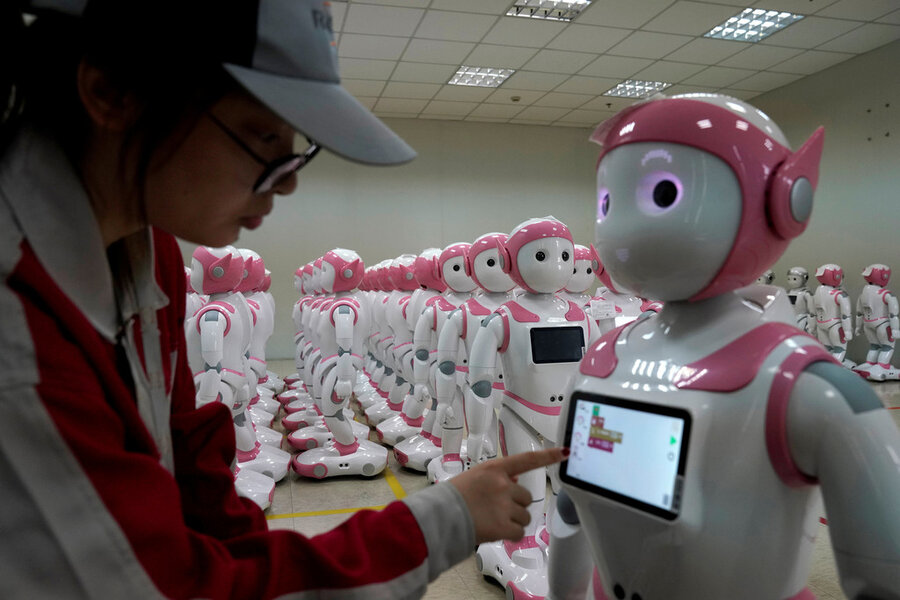Prepping US workers for new skills
Loading...
Amid the controversies swirling around the White House, you might have missed President Trump’s launch of an initiative on workforce development. His actions flag the need to address serious problems the US economy and America’s workers face: growing skills shortages, an increasing gap between unfilled jobs and workers to fill them, and solutions for the expected effects of rapid technological changes on future jobs and workplaces.
The United States and most other countries are poorly prepared to handle the waves of new technology, which some call Industry 4.0. The McKinsey Global Institute estimates that as many as 375 million workers worldwide may need to change jobs or learn new skills by 2030 because of technological changes.
The anticipated challenges, in addition to a globalized economy and the rise of China, has left many American workers sidelined and left behind. Political leaders have fallen far short of providing solutions while the marketplace has failed to offer good alternatives for millions of workers and many communities hit by plant closures and industry moves.
At the same time, according to the White House Council of Economic Advisers, there are not enough unemployed workers in the current labor pool to match demand. Some 6.6 million jobs are currently unfilled. Even before this, 45 percent of employers told a Manpower survey that they struggled to fill job vacancies. There is a big mismatch between work and workers in the economy.
Mr. Trump’s move is a welcome response to these issues. He signed an executive order creating a National Council for the American Worker made up of senior officials charged with developing better training and retraining of workers for high-demand industries. The council will be aided by an advisory board to help craft ideas for improving such opportunities for workers.
The president also launched an initiative in which companies, business associations, and others pledge to generate and implement job-training programs that produce results. And the council and its advisory board will also focus on ways to better connect business, workers, and educational institutions.
These efforts should link up with other steps needed to bolster the economy, such as investment in education, research, and critical infrastructure. The president and others should also push Congress to reform the system to permit more immigrants who can bring special skills and talents needed in the economy.
The success of Trump’s proposals will depend on funding and implementing them, and how well they are linked to initiatives already under way in various US states and cities.
The US can also learn from best practices in other countries. This year, the Group of 20 – representing the world’s 20 largest economies – and the smaller Group of Seven both focused on preparing for jobs of the future. And a Wilson Center report called for coordination across North America. Canada and Mexico are the two largest partners of the US for building things together.
As the Fourth Industrial Revolution sweeps through world markets, learning from others and sharing best practices is essential. America should lead the way by ensuring its workers are up to the tasks of the 21st century.







